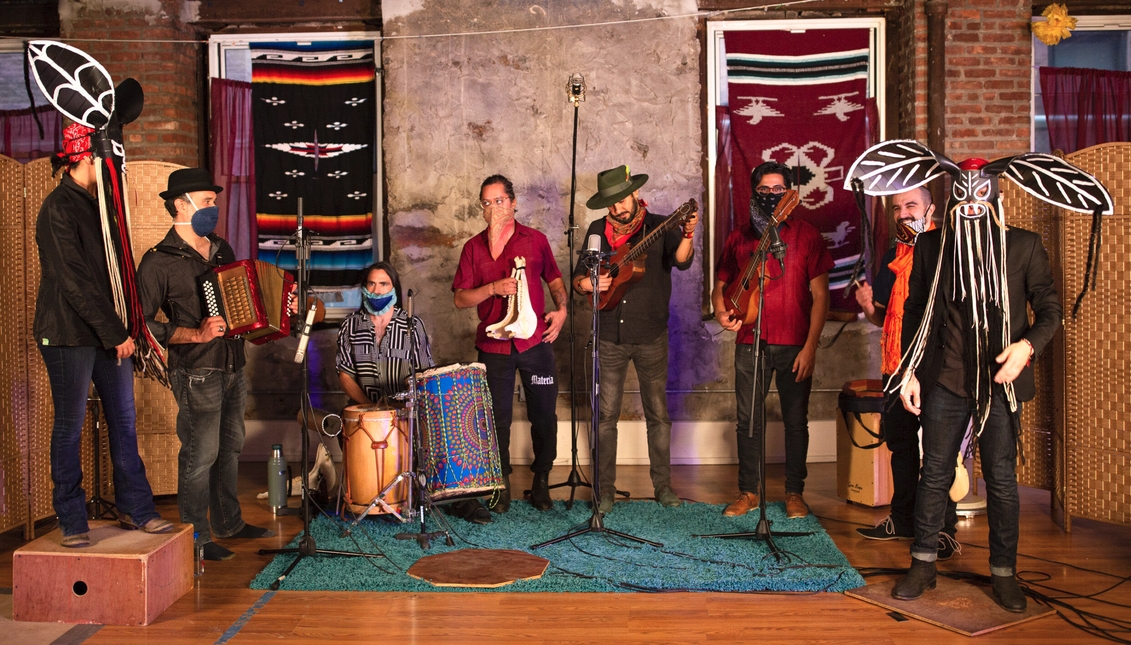
Jarana Beat: New York Fandango to 'fight back' the pandemic's gloom
The second urban-folk album by the New York band brings a juicy beat that invokes Caribbean aromas under the New York lights.
Jarana Beat has released their second album of fandangos, Vibración por Simpatía, and it's available now on all digital platforms. A compilation of small EPs that culminated in Yei Ollin: Movimiento III, the album speaks directly with the feelings of sadness and melancholy triggered by the COVID-19 pandemic.
Their urban folk project works perfectly, balancing Mexican and Afro-American musical tradition with the modernity of the South Bronx, New York. The band has been based in the Bronx since 2007, and the album includes performances at the first seven Jaranero festivals in the city.
More than 55 artists in total have collaborated on Vibración por Simpatía, exemplifying the band's tributes to its roots and a whole myriad of genres like bomba, plena, chacarera, cumbia, landó and son jarocho. Some of the collaborators include Ana Tijoux, John Benitez, Felipe Fournier, Mireya Ramos, Mariana Carrizo and Shae Fiol (Mariachi Flor de Toloache), among many others.
Since its beginnings and first album (¡Echapalante!, 2011) the band has not only grown and included dancers, but also considerably expanded the range of Mexican and Afro-amerindian influences by investigating sounds such as son huasteco and son guerrense.
All this is under the direction of Sinuhé Padilla-Isunza, who is always attentive to the mutations in fandango on the New York scene.
"In most of our Fandangos in New York, there are people from many diverse cultures, some from other countries in Latin America, and others from farther corners of the world," he explained, "but when they immerse themselves in the dancing, playing, clapping, and singing with us, it’s like their part of it, even if they’ve never heard this kind of music before. Their heartbeat recognizes it. A part of their soul resonates and connects us all."
But for the attentive viewer, there is something else ringing throughout, a kind of uto-Aztec mental counter-attack operation: the album is intended to function, as its name suggests, as a kind of loudspeaker for the waves of electro-magnetic space known as the Schuman resonance — very low-frequency band peaks that connect our bodies with earthly vitality.
Their movements and the intensity of more than 50 artists armed with invocations in the Nahuatl language, musical tradition, and powerful lyrics, transport us to a kinder side of the world bathed in Caribbean lights and gentler vibrations.











LEAVE A COMMENT: